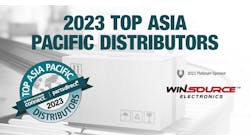I once interviewed a newly appointed chief procurement officer for a major global computer company. He told me one of his first purchasing initiatives was to reduce the number of suppliers that his company was doing business with.
He said the company had thousands of suppliers. He was too embarrassed to tell me the exact number because it was so high. In many cases, the company had a dozen or more suppliers for a single commodity.
The reason for the large number of suppliers was the company had a decentralized purchasing operation and the OEM had manufacturing operations and purchasing offices around the world. Each location was handling its own purchasing for the most part and each location had its favorite suppliers.
The CPO centralized purchasing and formed commodity teams to select and manage suppliers and negotiate with them on a companywide basis. Over several years the company slashed its number of suppliers, leveraged its global spend, and awarded more business to fewer suppliers. As a result, the OEM received significant price concessions from suppliers and lower procurement costs, saving the company several billion dollars.
Many companies reduce their number of suppliers to cut materials costs, but that is not the only benefit of doing business with a smaller number of suppliers. The idea of supply base rationalization is to become a more important customer to key suppliers that manufacture critical parts and develop new technology that an OEM needs for its future new products.
By having two or three suppliers for an important component rather than a dozen or more, electronic OEMs’ spend with the select few component manufacturers increases and buyers are in a better position to negotiate more favorable terms. It also allows the OEM to work closely with those suppliers on technology roadmaps and influence the technology direction of the supplier.
In addition, a company with a limited number of suppliers for a commodity can expect preferential treatment from the supplier during times of component shortages. During such times, suppliers give priority to their best customers. Having a few suppliers for critical components and working closely with them can also help mitigate obsolescence issues. This is important for OEMs in industries that have products with long lifecycles such as defense/aerospace, networking equipment, automotive, and industrial.
A supplier that partners with an OEM customer will be less likely to render obsolete older parts because it knows that the customer and perhaps other OEMs need the component. At the very least, the supplier will give a customer advance notice of its intention to stop producing a part and suggest alternative newer parts.
Buyers at OEMs that are reducing their supply base often struggle with determining how many suppliers they actually need for a commodity. Most buyers know that they don’t want a single source for a component if there are multiple suppliers. They want to be an important customer to the supplier, but they also want to maintain a competitive tension among suppliers.
That’s why many larger, leading-edge OEMs opt to have three preferred suppliers for a critical part. The OEM may apportion its spends for the component, awarding 50% of its business to the highest-performing supplier based on the OEM supplier rating system and supplier scorecard and perhaps 35% to the supplier with the second-best performance record and 15% to the third.
The percentage of business awarded can vary depending on supplier performance and can change from year to year.
Buyers who are reducing their number of suppliers should not assume that they are already doing business with the best suppliers just because they may be buying from a dozen component manufacturers. The electronics supply base has become much more global and there may be other suppliers that can manufacture components at a lower cost and higher quality levels than the buyer’s current suppliers. In other instances, there may be a supplier with a promising new technology that the OEM could use. While it may seem counterintuitive, it can be beneficial for buyers to seek out suppliers that their companies currently are not doing business with, evaluate them, and possibly qualify them during a supply base reduction initiative.
While the idea of working with fewer suppliers is not new, it has become more important because most electronics OEMs are not vertically integrated and rely heavily on their suppliers. An OEM may design and market a new computer, smartphone, or other electronics product, but it depends on suppliers to develop new component technology and manufacture the semiconductors, passives, connectors, and other components that the OEM uses in its products. To succeed in the marketplace, an OEM needs a select few high-performing component manufacturers that can build high-quality components in the volumes that the OEM needs, not an embarrassing number of suppliers.








